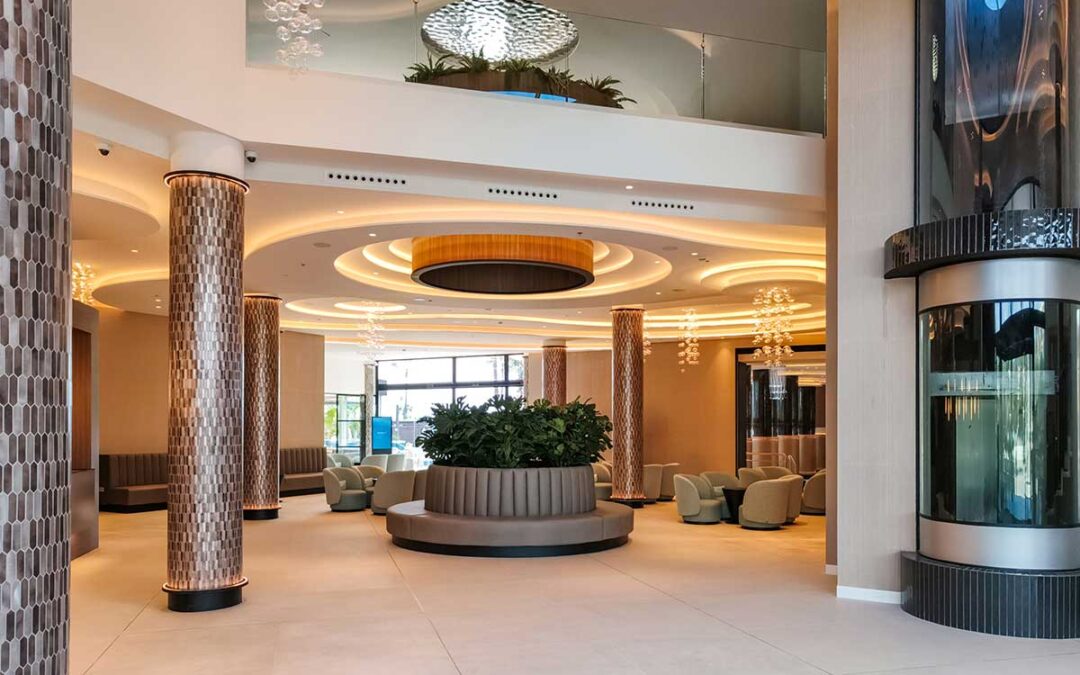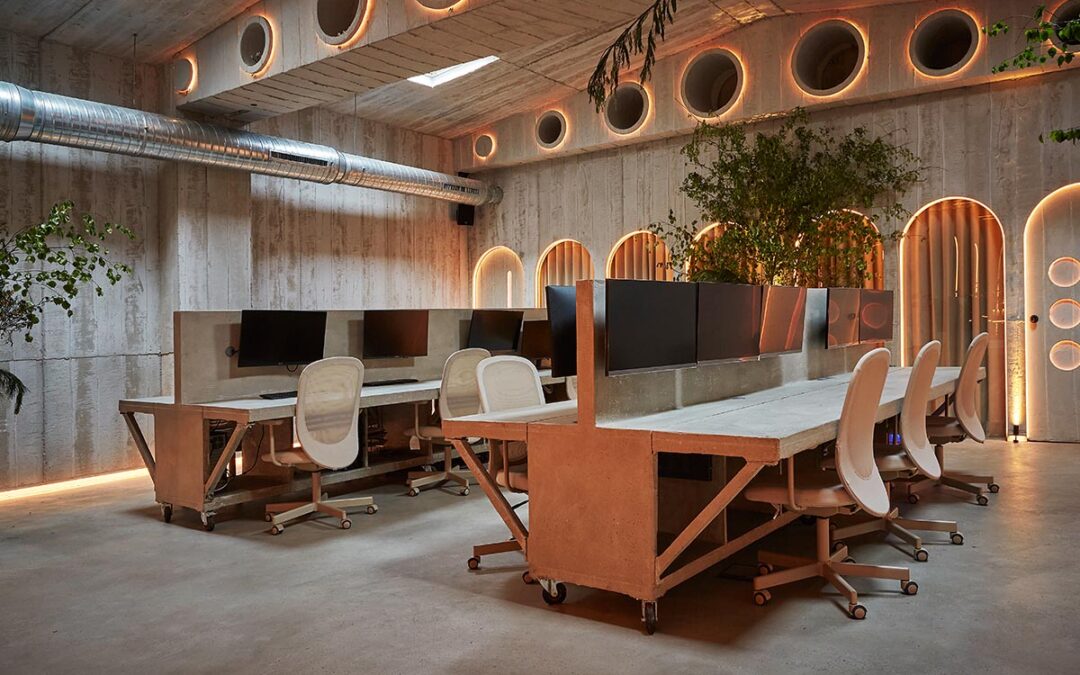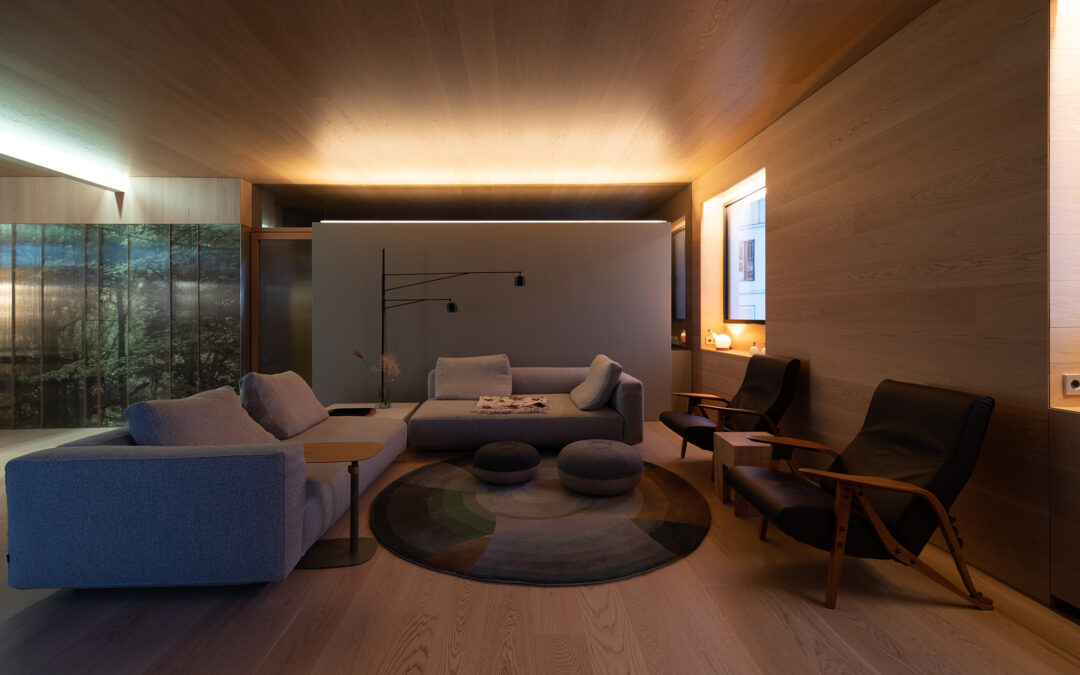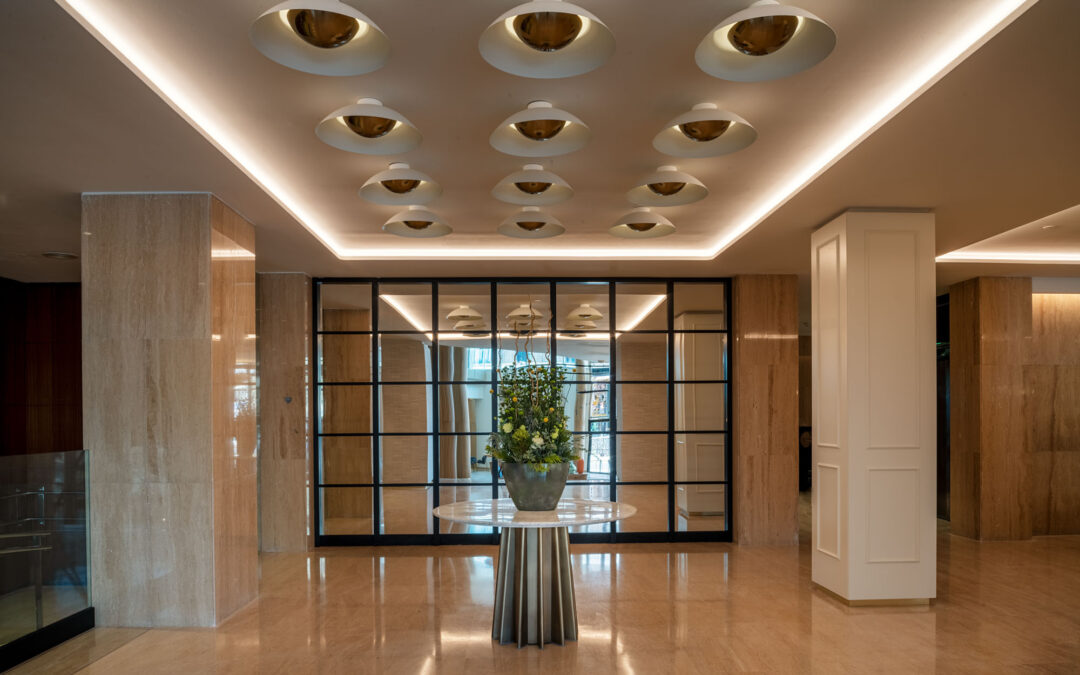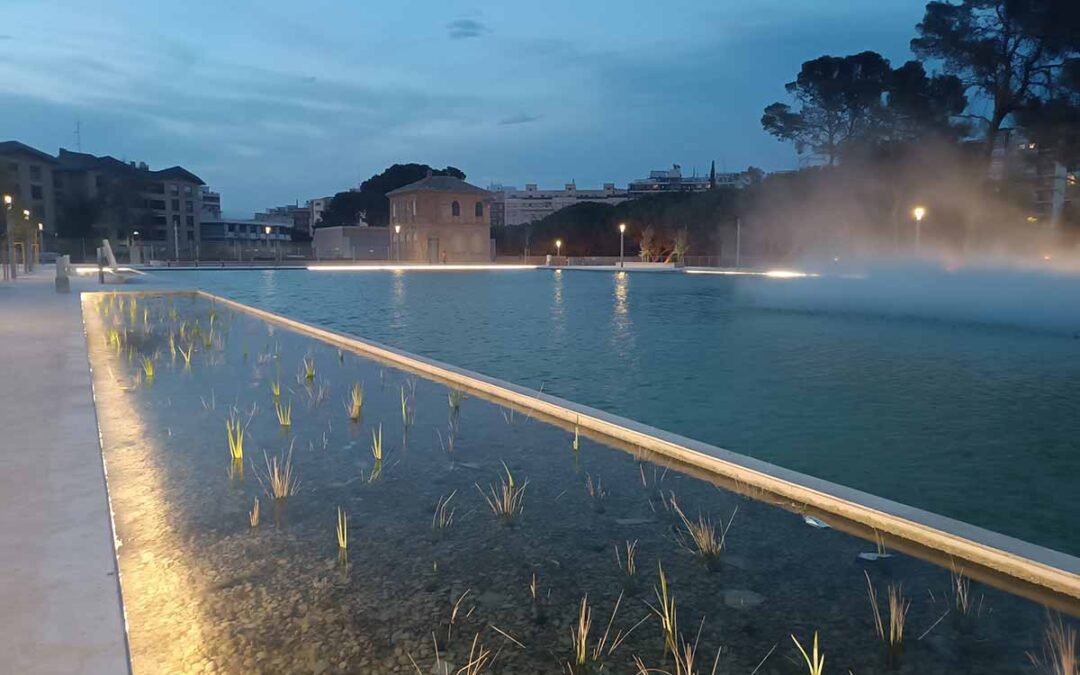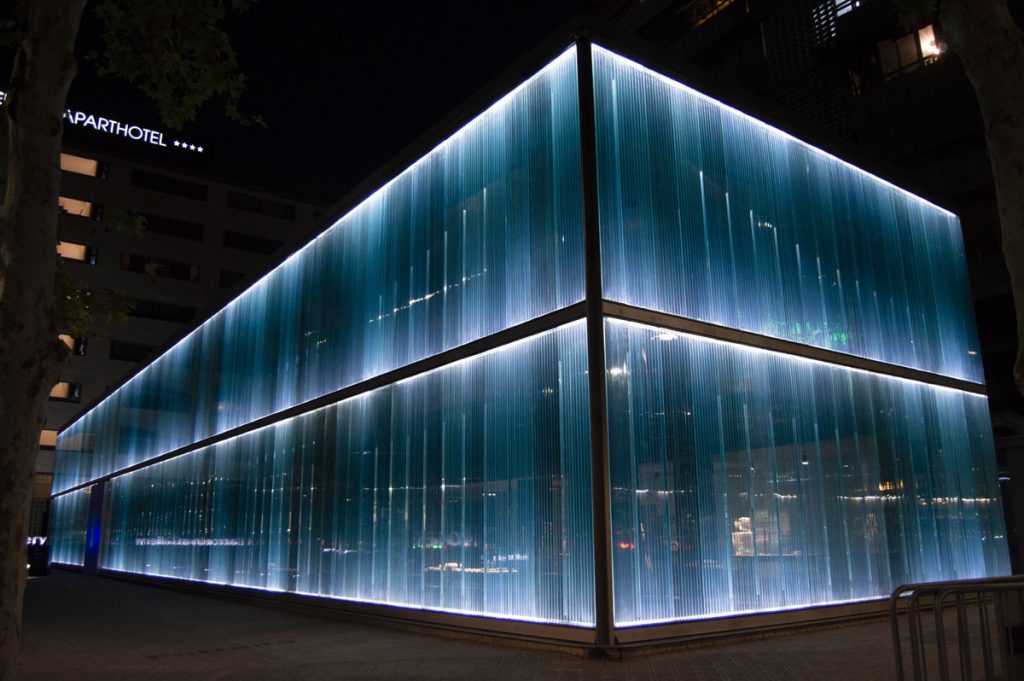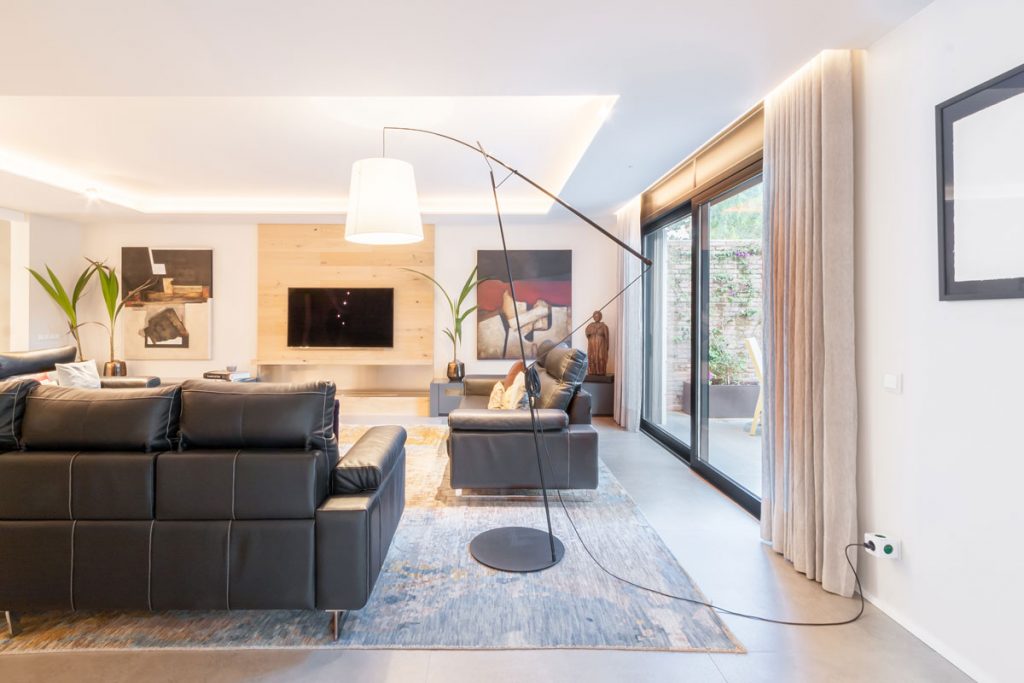
A living room is the part of the house where light layering is essential. While the other rooms are normally used for specific tasks like cooking, sleeping or showering, the living room where people spend most of their personal or family life, and engage in a wide range of activities that depend on the time of day or their habits and customs. Since this multi-purpose room is usually the largest in the house, it is essential to ensure it has carefully planned, flexible lighting that takes into account the different layers of light – general, task and accent – and that you can adapt it to each way that the room is used.
One good strategy before starting to design the lighting is to ask yourself the following questions: How is the living room going to be used? Is it going to be used for reading, social activities, watching TV, or relaxing on the sofa? Is it going to have a study area for working on a computer? Is it going to include also a dining area? Is it going to open onto the kitchen?
Let’s look at lighting strategies that make a living room work and come alive in each of these cases.
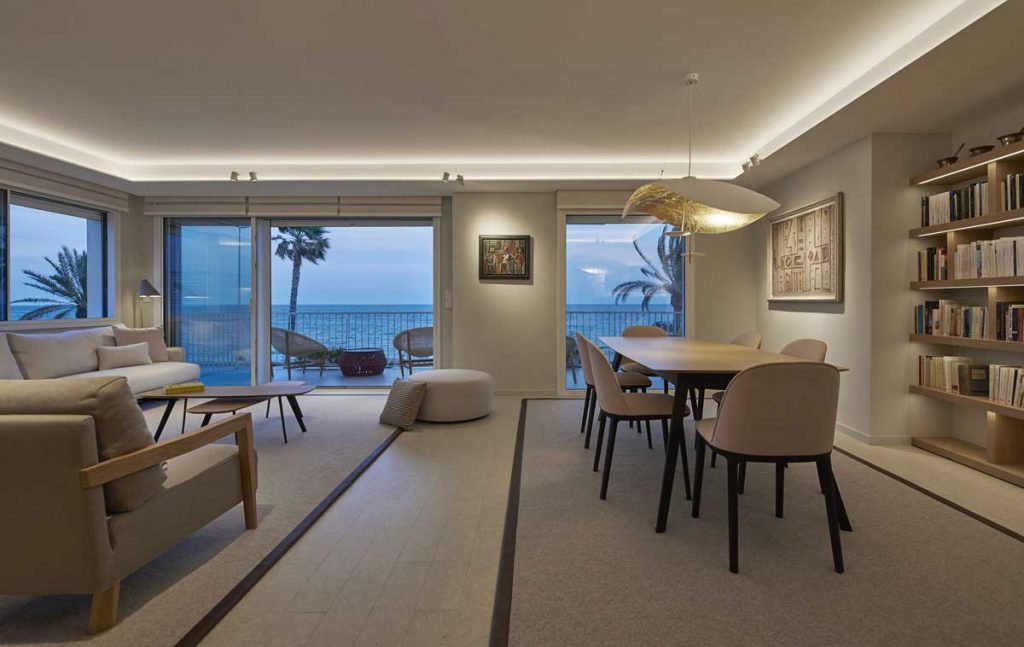
First layer: ambient lighting
If the underlying idea is that a living room is normally used for relaxing, it is important to design an ambient lighting system that provides a light backdrop to the room.
LED strip lights are an excellent tool for creating this first general lighting layer, especially for a cosy indirect lighting effect. Hidden in recesses, in decorations on false ceilings or walls, or even on top of tall furniture, LED strip lights provide an indirect, discreet and effective general light. Installing lights on cornices or in perimeter mouldings brings great results because all the light is directed towards the ceiling, which reflects it and creates an extraordinarily even ambient light. This kind of lighting is the ideal base on which to add the other layers of light for each kind of activity.
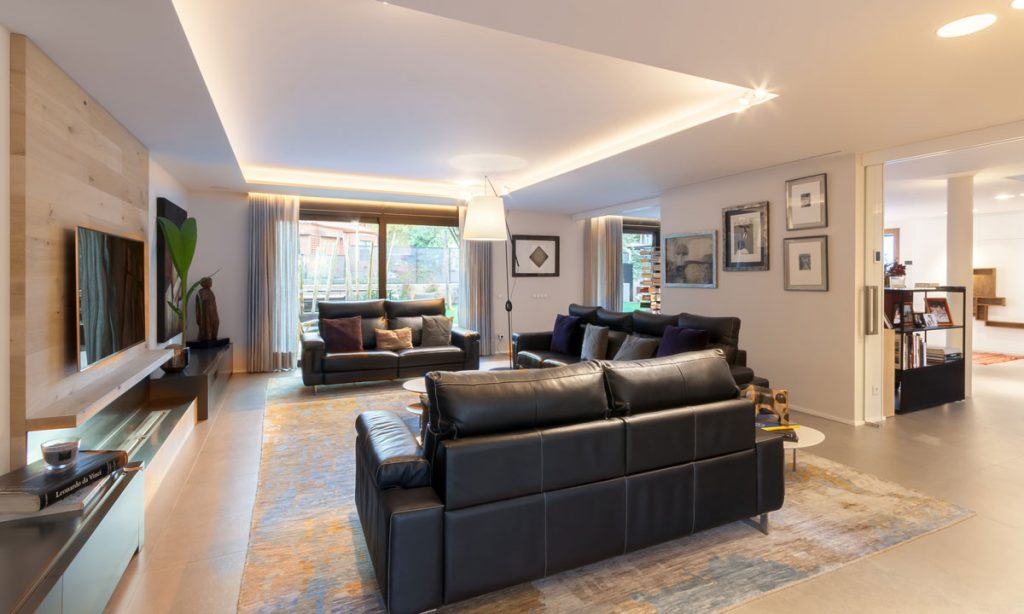
Second layer: reading and watching television
The best option for reading is to put decorative reading luminaires, especially floor and swivel lights, mere sofas or armchairs. Their bright, focused light creates a cosy atmosphere in which to enjoy a good book.
Watching TV or working at computer are other activities that people do every day in their living rooms and which call for almost the opposite type of lighting. TV and computer screens give off their own light, so you should avoid an overly dark environment so as not to tire your eyes too much. Yet the room’s lighting should not conflict with the screen, either by reflecting off it or generating a glare. Again, using indirect lighting solutions is the best way to solve both issues, avoiding any glare on the screen while reducing eyestrain at the same time. To ensure the solution is really flexible, the lighting should be dimmable so that you adjust its intensity.
Another more specific solution for watching TV is to place strip lighting behind the TV set, ideally using a colour temperature changing or RGBW LED strip. This helps to create a pleasant atmosphere while increasing visibility around the screen by providing the ideal level of contrast.
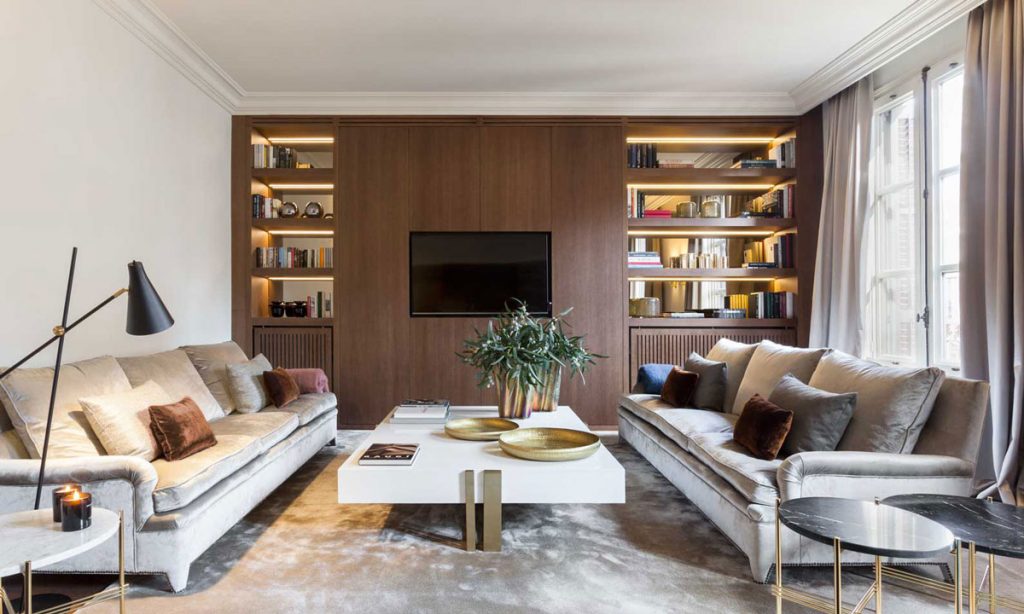
Third layer: accent lighting for social activities
Living rooms are usually where friends and family meet and get together, and often include a dining area, where lamps hanging over the dining table often take centre stage.
When it comes to socialising, accent lighting is key. This kind of lighting is often used to highlight artwork, family photos, bookshelves, plants, architectural details or anything that adds value and personality to the space and deserves to be highlighted.
There are numerous techniques for generating accent and contrast, whether through downlights, swivel spotlights or LED strip lights. Some of the best ways of using strip lighting is as a light source to illuminate pictures or to highlight the texture and material of a vertical wall with grazing light or wallwashing. Also, when they are built into furniture like shelves or bookcases. In the latter case, you need to think about how to build the lights into the item of furniture, and the types of shapes and optics, as the different combinations can produce totally different effects: from diffuse frontal lighting in a bookcase, to 45-degree angle accent lighting to illuminate decorative objects, to backlighting to highlight translucent or transparent elements such as bottles or crystal glasses.
The solution of integrating lighting into furniture, as a general kind of accent lighting, is also often used as a visual connecting element in kitchens that open up onto a living room. These cases call for more sophisticated lighting effects, especially when highlighting materials and finishes or transition areas to the living room, to “ennoble” the kitchen’s lighting language.
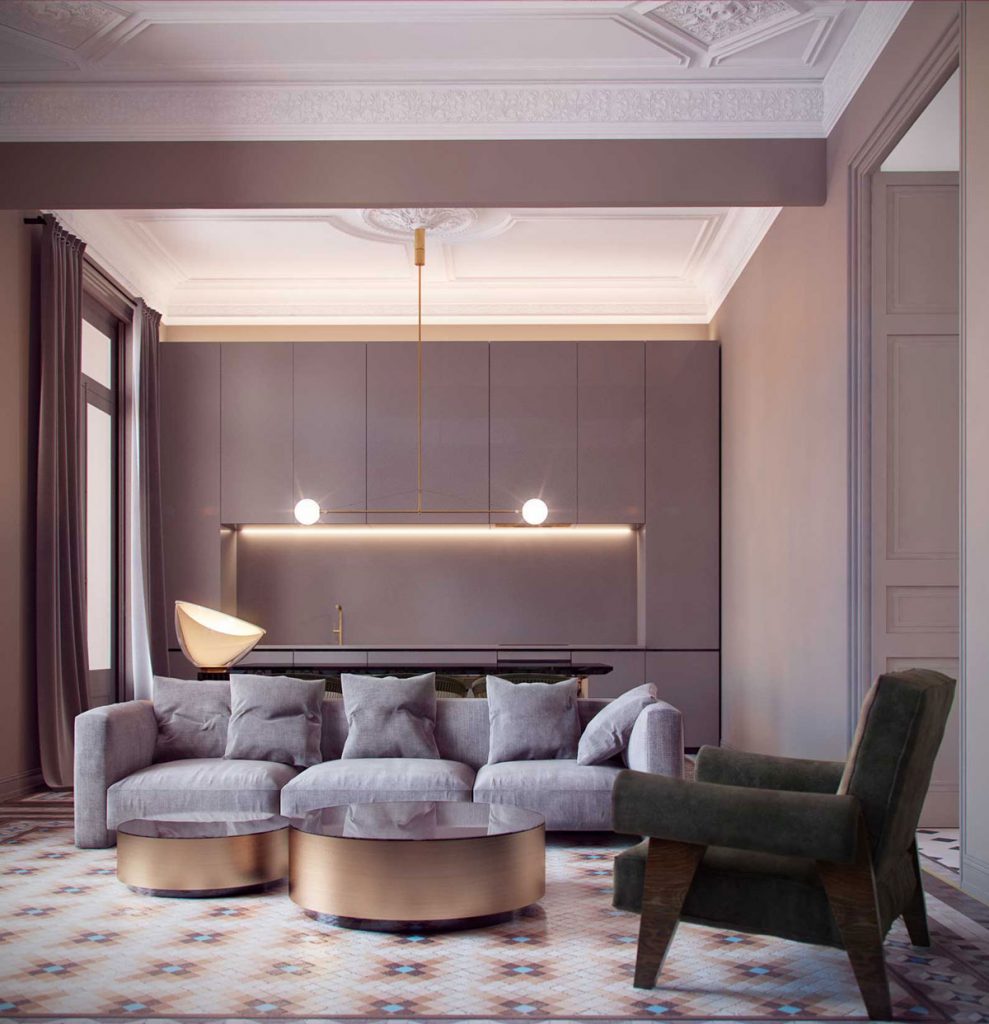
Yet since living rooms are used in so many ways and laid out so differently, it is not only important to work with layers of light, but also to consider how they interact with each other. A basic approach would be to organise the circuits and lighting rationally, considering the different ways in which the space is used. The next step would be to implement a control system to make the layered lighting as flexible as possible and make the lighting of each different scenario easier to manage.
But if you need more advice on how to build LED strip lighting into your project, just contact us at info@lluria.com, and we will be happy to help you find the best solution

